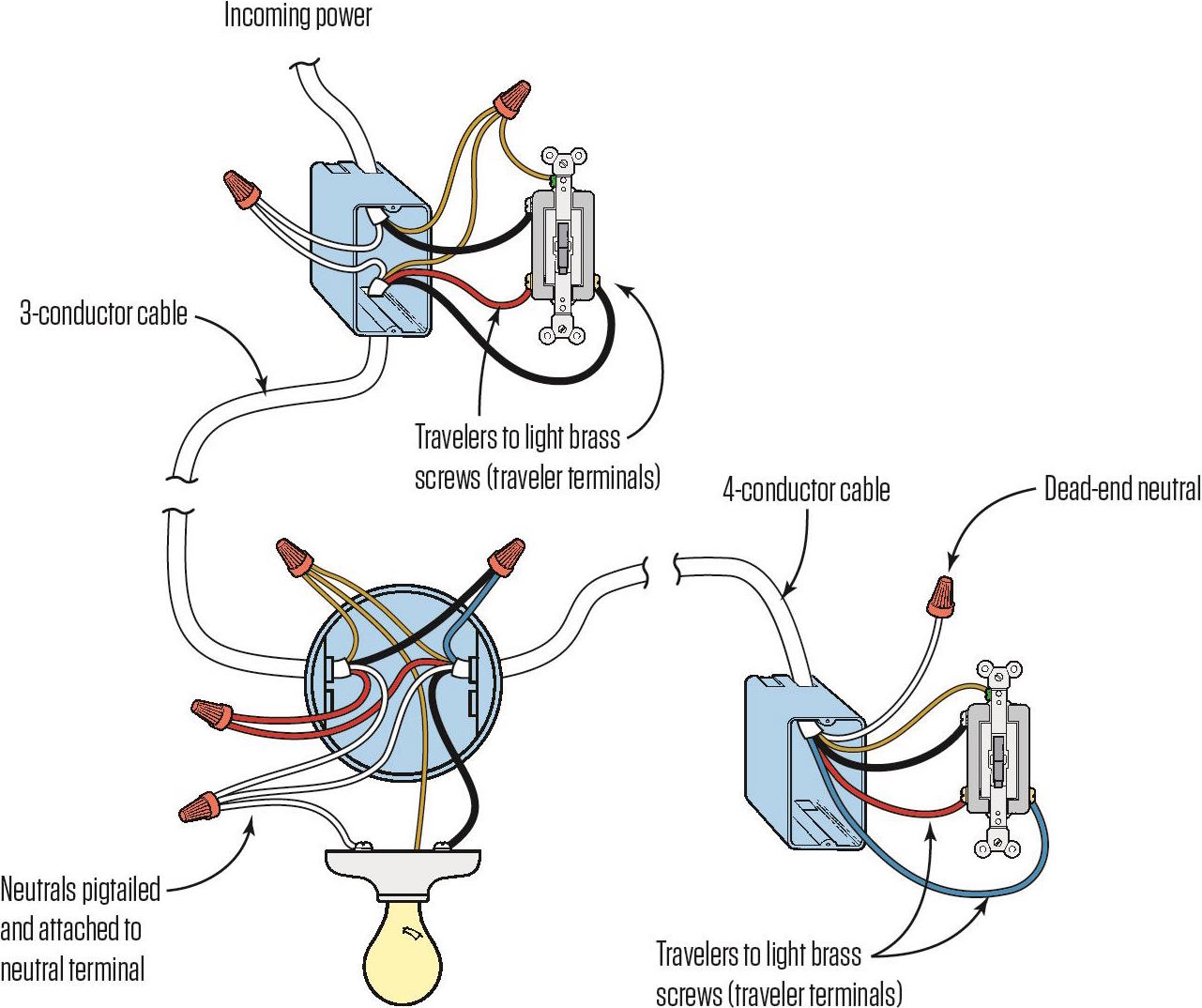

Three-way and four-way switches make it possible to control a light from multiple locations, such as the top and bottom of a stairway, either end of a long hallway, or multiple doorways into a large room. The electrical load may be permanently hard-wired, or plugged into a switched receptacle. The controlled load is often a lamp, but multiway switching is used to control other electrical loads, such as an electrical outlet, fans, pumps, heaters or other appliances. Readers in most other countries should read "two-way" or "SPDT" for the United States "three-way" and "intermediate", "crossover" or "DPDT" switch for the United States "four-way". This article follows usage in the United States. Three-way and four-way switches A double pole, double throw switch wired to act as a four-way (intermediate or crossover) switch In alternative designs, low-voltage relay or electronic controls can be used to switch electrical loads, sometimes without the extra power wires. Double pole, double throw (DPDT) switches allow control from three or more locations. When the load is controlled from only two points, single pole, double throw (SPDT) switches are used. In contrast to a simple light switch, which is a single pole, single throw (SPST) switch, multiway switching uses switches with one or more additional contacts and two or more wires are run between the switches. A common application is in lighting, where it allows the control of lamps from multiple locations, for example in a hallway, stairwell, or large room.

In building wiring, multiway switching is the interconnection of two or more electrical switches to control an electrical load from more than one location. JSTOR ( April 2021) ( Learn how and when to remove this template message).Unsourced material may be challenged and removed.įind sources: "Multiway switching" – news Please help improve this article by adding citations to reliable sources. Get the picture of how a 3-way switch works, and it’s not that hard to wire them yourself or fix a problem.This article needs additional citations for verification. That’s a quick fix that takes just minutes to remedy. Man times, the problem is simply wires that are connected to the wrong terminal.

Troubleshooting a 3-way switch is not too difficult as you can see from the tips above. Make sure you have 120v power coming from your panel.

3 SWITCH LIGHT SWITCH WIRING HOW TO
Here’s how to troubleshoot a 3-way switch problem: 3-Way Switch Troubleshooting Tipsįollow these 3-way switch troubleshooting tips to avoid needless frustration in diagnosing a problem. To confirm you wired them correctly, check back and forth between switches at least 3 times. The moral of the story is, never be content operating 3-way switches just a couple times.


 0 kommentar(er)
0 kommentar(er)
